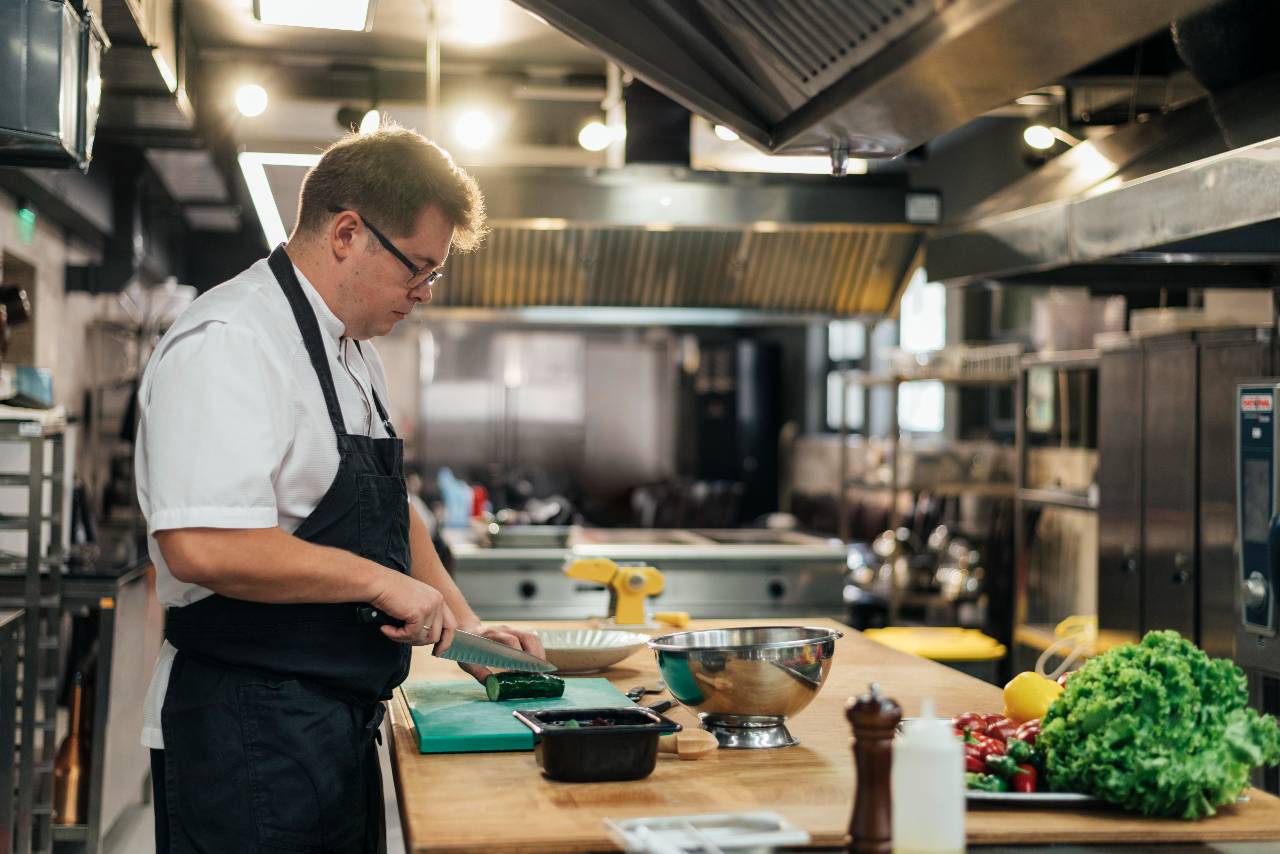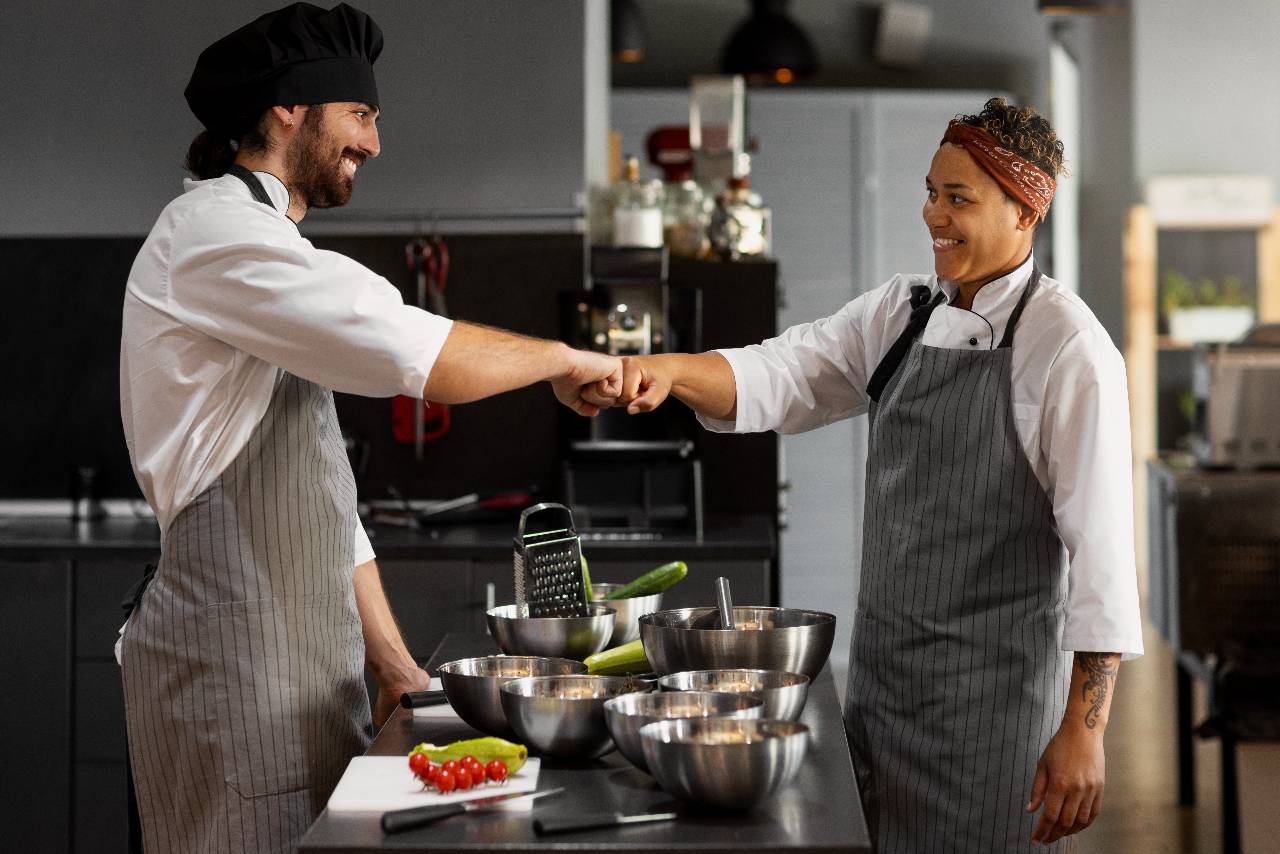Top 10 Strategies Every Restaurant Manager Should Follow
Effective leadership strategies help restaurant managers build trust, improve performance, and create lasting success during transitions to new teams.

Getting Started Right
Taking over a new restaurant - or opening one in a different location - is always a big deal. Whether you're an owner starting another branch or a manager stepping into a place that needs help, those first few weeks really matter.
Every restaurant runs a little differently. The staff have their own way of doing things, and the last thing you want to do is change everything too fast. Rushing in with new rules or systems can confuse people and cause stress. In fact, a study found that restaurants with high staff turnover often struggle with poor communication and unclear leadership in the first 30 days.
This guide is here to help you start strong. It's full of tips that focus on watching and learning first, building trust with your team, and slowly making the right improvements. You'll learn how to get your team on the same page, boost performance, and create a positive work culture - without overwhelming anyone. Good leadership is about listening, learning, and leading with purpose - and that starts from day one.

Tip 1. Observe Before You Overhaul
When you walk into a new restaurant, your first job isn't to fix things - it's to understand how they work. Spend your first week or two just watching. See how the kitchen runs during a lunch rush. Pay attention to how servers handle busy tables. Notice how tickets are printed, how food is plated, and how cleanup is done.
Don't start changing layouts, prep routines, or front-of-house systems right away. Even if things seem messy or inefficient, there's often a reason behind the way people do things. Maybe it's the space, maybe it's the team's rhythm. Either way, rushing in with changes can hurt morale and create resistance.
According to Gallup, 70% of team engagement depends on how people feel about their direct manager. If you take time to learn before acting, your team will feel respected - and they'll be more open when it's time to improve things.
Use a small notebook or phone app to jot down what's working well and where you see opportunities. Your goal is to understand the big picture before making any moves. The better you observe now, the smarter your decisions will be later.
Tip 2. Build Trust with Kitchen and FOH Staff
Before you can lead a team, you need to connect with them. Take time to talk to your cooks, servers, bussers, and hosts. Learn their names, what they do, how long they've been there, and what they like - or don't like - about their job.
Don't just show up to give orders. Sit with them during breaks, ask questions, and listen without judgment. People are more likely to follow someone who shows respect and interest, not someone who acts like they know it all.
According to a Harvard Business Review survey, employees who feel their manager truly knows and supports them are 67% more likely to stay with the company long-term. In a restaurant, that kind of stability can make all the difference.
Let your team see that you value their experience. Say things like, "How do you usually handle this?" or "What do you think works best here?" These small conversations build trust and give you insight into the team's daily struggles and successes.
Remember, trust isn't built in a day. But showing up consistently, being honest, and treating everyone with kindness will help lay the foundation for a stronger, more united team.

Tip 3. Understand Existing Restaurant Processes
Before you change how things are done, take time to learn how the current systems work. Watch how tickets come in and how the kitchen handles them. Notice how food gets prepped, how plates are organized, and how servers communicate with the kitchen. Ask questions like, "Why do we do it this way?" or "What happens if we try it a different way?"
Sometimes, what looks inefficient at first actually works for that space or team. Maybe the salad station is near the dish pit because it helps during cleanup. Or maybe the way orders are called out fits the pace of the kitchen. Don't assume something is wrong just because it's not how you've seen it done before.
Instead of rushing to replace systems, ask staff to walk you through their routines. You'll build respect, learn faster, and make better choices when it's time to improve.
Tip 4. Evaluate Operational Skills with Metrics
Once you've watched the team in action, start tracking a few key numbers to understand how well things are really running. Don't rely on guesswork - use simple, visible metrics to measure performance.
Time how long it takes to prep popular dishes during peak hours. Track table turn times during dinner rushes. Keep an eye on order accuracy by checking how many plates are sent back or corrected. These numbers help you spot where things are smooth - and where things are falling behind.
You can also add small daily tracking tools. For example, post a whiteboard in the kitchen with goals like "Pizza stretch under 90 seconds" or "Side station cleaned by 3-00 PM." When the team sees their progress, it turns work into a game and helps them stay motivated.
Start with just two or three numbers. Keep it simple, be consistent, and celebrate progress. The goal isn't to add pressure - it's to build awareness and pride in doing things right.
Tip 5. Encourage Two-Way Feedback from Staff
If you want your team to care about the restaurant, give them a voice. The people doing the work every day know where the problems are - whether it's a broken cooler, a slow point-of-sale system, or a confusing order process.
Make it a habit to ask questions like, "What's getting in your way?" or "What would make your job easier?" You can do this during shift huddles, one-on-one chats, or even through a simple suggestion box. The goal is to show that their opinions matter.
When staff feel heard, they're more likely to support changes. According to a Deloitte study, 83% of employees feel more loyal to leaders who listen to them. That loyalty leads to better teamwork, less turnover, and smoother shifts.
You don't have to agree with every idea, but you should always acknowledge it. Say, "Thanks for sharing - I'll think on that," or, "Let's test your idea next week." Even small changes based on staff feedback - like moving a prep cart or tweaking a script - can make a big difference.
By keeping communication open both ways, you build a culture where people feel respected and take pride in improving the place together.
Tip 6. Communicate a Vision for the Location
Once you've learned the team and the flow, it's time to share where you want things to go. Don't just say "We need to do better." Be clear and specific. For example, tell your staff, "I'd like us to drop ticket times by two minutes," or "Let's aim to get five new five-star reviews this week."
People work harder when they know what they're working toward. A simple, clear goal gives everyone something to focus on - and it turns daily tasks into a team mission. You can also create friendly challenges like a weekly upsell contest or a leaderboard for cleanliness scores.
The key is not just setting goals, but helping your team see how reaching them benefits everyone - from earning more tips to making the shift run smoother. Check in on the goals regularly. Celebrate progress, adjust if needed, and keep things positive. When your team understands the why behind your vision, they'll take more pride in how they do their jobs - and push themselves to get better each day.
Tip 7. Roll Out Changes Slowly and Strategically
Even if you see a dozen things you want to improve, don't try to fix everything at once. Big changes made too quickly can overwhelm the team and lead to push-back. Instead, start small. Choose one high-impact area - like kitchen flow, customer greetings, or side work routines - and focus on that first.
A great way to do this is by using weekly themes. For example, make it "Speed Week" where everyone works on faster prep and service. Or try "Cleanliness Week" where the focus is on keeping workstations spotless and organized. Give your team one clear goal at a time so they can focus, practice, and succeed.
To help things stick, create short checklists. These could include 3 Steps to a Great Table Greeting or 5 Things to Check Before Closing the Station. Keeping things simple makes it easier for staff to follow through - and easier for you to spot what's working.
Remember - consistency beats speed. Roll out one improvement at a time, build habits around it, then move to the next.
Tip 8. Celebrate Wins Loudly
In a fast-paced restaurant, it's easy to focus only on what's going wrong. But if you want to keep your team motivated, make sure you also point out what's going right - loudly and often.
Did someone prepare a station perfectly? Call it out. Did a server handle a tough table with grace? Give them a shout out during the next pre-shift. These small wins matter, and recognizing them builds momentum. A quick "Great job today!" in front of the team can go a long way.
Studies show that 69% of employees say they would work harder if they felt more appreciated. In restaurants, where burnout is common, a little recognition can help people feel seen, valued, and proud of their work.
You don't need big prizes or long speeches. Just be consistent. Send a thank-you text after a busy shift, share customer compliments in group chats, or keep a "win board" in the back of the house with notes about who did what well.
Celebrating wins creates a more positive vibe, boosts morale, and helps the team feel like they're part of something that matters. When people feel good about their work, they show up stronger - and stay longer.
Tip 9. Invest in Your Leadership Skills
Running a restaurant isn't just about managing food and schedules - it's about leading people. And just like your team needs to improve over time, so do you. Great leaders don't stop learning.
Start by picking one area to grow in - maybe it's how to handle conflict, hire better, train new staff, or understand your numbers. Read a book, listen to a podcast, or watch a short training video during your downtime. Even 15 minutes a day adds up.
You can also learn from others in the industry. Talk to fellow operators, join a local restaurant group, or attend a workshop when you can. The more you learn, the more confidence you'll have - and the better your team will respond.
When your staff sees that you're trying to grow, it sets the tone. They'll be more willing to learn too, and that's how you build a culture of continuous improvement - from the top down.
Tip 10. Set Clear Expectations Early
From day one, your team should know exactly what you expect. Don't leave it to guesswork. Be clear about what "great" looks like in your kitchen, dining room, and customer service.
Whether it's how fast orders should go out, how clean stations should be, or how guests should be greeted, take time to explain it. Show them with examples if needed. Write it down, post it in the back, and repeat it often.
Clarity prevents confusion. When staff know what's expected, they can focus, perform better, and avoid unnecessary stress. A McKinsey study found that teams with clear expectations are 25% more productive and far more likely to stick together.
Also, explain why it matters. If you care about upselling, explain how it helps tips. If you want faster ticket times, explain how it improves guest satisfaction. When the team understands the purpose behind the standard, they're more likely to take it seriously.
Setting expectations early saves you from tough conversations later. It helps build structure, reduces turnover, and makes it easier for new hires to fit in. Everyone wins when the whole team is on the same page.
Summary
Taking over a new restaurant location or team can feel overwhelming, but the best leaders know it's a process - not a race. Start by watching and learning, building trust with your team, and understanding how things currently work before making changes.
Use simple data to measure performance and keep communication open both ways. Share a clear vision and roll out improvements one step at a time. Celebrate every win, invest in growing your own leadership skills, and set clear expectations early to keep everyone on the same page.
Leadership in restaurants is about balancing observation, respect, and steady progress. When you lead with patience and purpose, you create a team that feels valued, motivated, and ready to deliver great service every day.